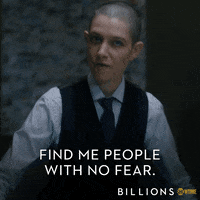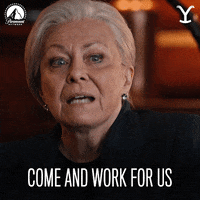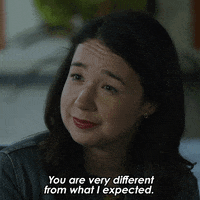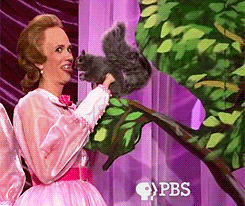
Imagine you’re a founder at a hot-shot early-stage startup that’s just raised a ton of money. You hire your first high profile Vice President of Engineering (VPE) after months of searching, someone who you carefully vetted and came highly recommended by credible people. And, your VPE quits after less than 24 hours on the job.

Sounds crazy? Well, it happened with a fintech startup called Clinkle, in 2013. Founded by a then-22-year old Lucas Duplan, Clinkle raised US$25 million in June, in what was then the largest seed round ever announced in Silicon Valley history. They closed on a seasoned ex-Yahoo engineering leader, Chi-Chao Chang as their first VPE in December.
Clinkle was a secretive company, and wouldn’t divulge the true state of its product and strategic road map to an outsider. The founder was only willing to let someone go under the hood after signing.
Chang on his first day found out the company was planning a round of layoffs while hiring in a bunch of new senior folks, and the product and marketing strategy were in much poorer shape than he imagined. He wasn’t scared by hard work or a product that needed serious reworking. But fundamental disagreements over where the company was headed were not something that could be fixed.

The Clinkle story serves as a cautionary tale and doesn’t apply to the vast majority of searches I’ve worked on in the USA and Asia, though I’ve seen many situations where a hire gets dragged out.
A VPE is one of the most critical (and expensive) hires that an early-stage startup can make, and getting it right can save founders a lot of heartaches and stress down the road. The talent pool for technical leaders is also smaller and more untested in Southeast Asia, which makes it more challenging.
So let’s highlight some key Dos and Don’ts when hiring your first VPE.

Let’s hear the do’s
Do be very clear on what you need from this hire:

As a founder, ask yourself, what pain points should this hire solve? What projects are stuck on the back-burner until you fill this role? Those two questions will take you a long way toward writing an effective job description.
Being clear on the specific deliverables will allow you to figure out what are hard requirements, vs nice-to-haves. I like to use the following table:

Breaking down requirements into discrete categories forces you to drill down on the critical areas. This will help in writing a more thoughtful job description to circulate to your network and recruiters.
At the same time, be realistic as to what a VPE can do. A VPE’s main job should be to focus on the people and processes to build a scalable, productive and happy engineering organisation.
Depending on the stage, this person could be given a Head or Director of Engineering title. This is different from a CTO. who’s usually someone in the founding team with a strong technical background that’s able to get the initial architecture and product off the ground and set that roadmap.
Do have your pitch down for a technical leader:

For candidates who are in high demand, you have one shot to make a first impression. For series A/B companies, the founder/CEO should always take the first meeting. This lets you put your best foot forward in articulating the company mission and how important this role is. It also allows you to learn and calibrate the best fit for your company.
For technical leaders, be prepared to talk about why what you’re building is technically challenging and interesting. One of the key duties of a VPE is to help you hire and retain engineers. They need to feel confident they can go out there and sell that.
Also Read: 5 productivity tools for busy startup founders to stay focused in 2022
It’s all well and good to highlight what a collaborative culture you have and how you provide free lunches, but what most talented engineers really want is to work on something complex they can dig into.
Do go hard after the folks you want:

For high-quality candidates, i.e. folks that people you trust refer to you (whether it’s a recruiter, VC or someone in your network), go after them! This is not the time to sit back and think “Oh if they’re interested, they will come back to me”. Reach out directly, and quickly.
When we were hiring Uber’s first CTO, founder Travis Kalanick took it upon himself to relentlessly seek out strong candidates. The candidate lives in Seattle and couldn’t find time to come to San Francisco in the next few weeks? No problem, Travis would get on a plane the next day and fly to meet them in person. You may not be able to convince or close the candidate but you would have left a strong impression, built a relationship, and that person may refer someone else to you.
Once you feel you’ve found the right person, go all out to close them, being flexible on compensation as needed, getting their family’s buy-in, etc.
Don’t be afraid to ask for help and call in favours, ask your VC, recruiters or board members to talk to the people you are targeting. Busy candidates can often be more responsive to an email from a known VC versus an unknown founder.
Founders in our portfolio often ask me how to interview people more senior to them; I can then connect them to seasoned VPEs to help them prepare for such interviews. People can be remarkably generous and often flattered to be asked for help.
Now, onto the don’ts
Don’t hide (all) the bad stuff, be transparent and honest:

Tying this back to the Clinkle debacle, don’t try to hoodwink candidates and tell them you’re further along than you are, have more funding than you have secured, or that you don’t have any technical debt. The truth will come out and you want a candidate to be aware of what they’re getting into before signing on the dotted line.
Sometimes founders feel like they need to only show the good stuff and hide the stuff they are really worried about, for fear of scaring away candidates. Trust me, any experienced leader will have seen their fair share of crazy, chaotic, screwed up situations. And you can build trust early if you can embrace these and make them part of solving the problems.
Don’t rule out people who aren’t from your tribe:

Cultural fit and chemistry are extremely important. Ultimately this is someone you will be working with closely and there needs to be a ton of mutual trust and respect. But sometimes “not a cultural fit” becomes code for “this person doesn’t look, act or feel like me, therefore they must not be qualified”.
Also Read: How companies can nurture the next generation of tech talent today
Wanting people from your tribe, eg: same school, same background, same sex is natural but can be dangerous when hiring your first external senior hires and getting to a diverse team. I am encouraged that I see this issue less in Southeast Asia, by virtue of there being so much richness in diversity and the rise of remote teams.
I once worked with an early stage fintech firm with a pretty cookie-cutter, the non-diverse engineering team of 20, looking to hire their first VPE. They were callous and in my view, disrespectful when meeting with some (qualified) candidates.
The CEO would show up late for meetings and sometimes cut the meeting short after 15 minutes when he felt the “chemistry wasn’t there”. When pressed what exactly that meant, it seemed to come down to whether the candidate was someone he would want to grab a beer with, and didn’t speak English with an accent.
It’s not wrong to rely on instinct. Our gut often tells us things that can’t be rationalised. But also be aware (especially if you are a young founder) that the things you look for and are comfortable with may lead you to exclude people who could actually be great for the job but just aren’t the “type” you are used to.
And whether you are discriminating against and ruling out people due to your unconscious biases. Take a beat to think about why some candidates resonated with you and not.
Don’t hold out for the Unicorn aka Purple Squirrel:

Back in the 2010s in Silicon Valley, we would refer to a candidate who ticked EVERY SINGLE BOX that a founder wanted as a unicorn, elusive and mythical. Nowadays the term unicorn is used more to describe companies with billion-dollar valuations, so I’ll revert to another lesser-known term, the Purple Squirrel: this is used to describe sought-after candidates with the perfect, but often impossible, a combination of skills for a given job.
I once worked on a search for a very attractive Series D company where it took us over two years to find the right VPE candidate. During that time I went on maternity leave twice!
Did they end up with a great candidate? Yes, but the process was so long because we had a very long list of target “reach” candidates (every single VP at Google and Facebook) and there were too many people involved in the decision making, which made it easy to find something wrong with every candidate.
For founders in Southeast Asia, where the market is less developed and there aren’t as many folks who have successfully scaled multiple startups, don’t get overly focused on specific brand names, paper qualifications and pedigrees.
Google, Apple, etc were once startups but now are massive public companies. Hiring an ex-Googler does not guarantee quality and might not deliver the skillset your startup needs. Hiring someone who is very good at managing a team of 100+ engineers may not be the right person to manage a team of 25 engineers.
Also Read: Singapore faces talent crunch for engineering and product manager roles: Report
So, let go of the idea of the perfect candidate and focus more on applicable skills for the role — this will be in terms of actual hands-on qualifications and also in personality and approach.
Do you need a scrappy problem-solver, an agile team player, or a deadline-driven technician? Think about how “knows how to mentor and make people feel heard” may be more of a draw for a VPE role in your organisation than “is the best coder the world has ever seen.”
Final thoughts
In summation, a great VPE that is right for your organisation can make the difference between success and failure at the early stage. So, look beyond just technical skills and reflect on the quality of their character, and always do your reference checks and backchannels!

I welcome comments/feedback/questions which I’ll digest over time, reach me here at LinkedIn.
Disclaimer: Any content provided on this post are views of my own and does not represent the views or opinions of Monk’s Hill Ventures and its affiliates.
–
Editor’s note: e27 aims to foster thought leadership by publishing views from the community. Share your opinion by submitting an article, video, podcast, or infographic
Join our e27 Telegram group, FB community, or like the e27 Facebook page
Image Credit: Canva Pro
The post Hiring a VP of Engineering if you’re an early stage startup: Dos and don’ts appeared first on e27.
